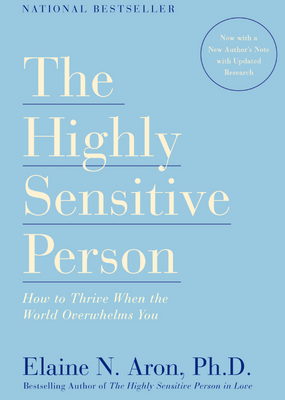What can canaries help us learn about autoimmune disease? First, we need to understand, what does, “Canary in a coal mine” mean?
With their bright-feathered feathers and chattering sounds, canaries have been a common household pet for centuries. Yet, it wasn’t always this way. In the 19th century, using canaries in coal mines to detect carbon monoxide and other toxic gases became an everyday practice. Canaries, like many birds, are suitable for detecting early signs of carbon monoxide because they’re vulnerable to airborne poisons.

With the surge of industrialization, mining became a vital industry. Meaning risk management in the mines became a significant concern. Mines can be filled with carbon monoxide, a deadly gas that is odorless and colorless. It’s also highly flammable. Carbon monoxide can quickly build up in the human body and cause death over time.
It was discovered that a canary would immediately show signs of distress in the presence of small amounts of carbon monoxide. It would die well before a human would begin to feel the effects of carbon monoxide poisoning. Miners used the canaries to help determine if conditions were safe. Today, miners use more humane safety measures (technology) to detect carbon monoxide.
Hence, when I say that, I feel like “a canary in the coal mine,” I mean it very literally.
I have been sensitive my entire life. Yet, I didn’t always understand this part of myself. I first embraced my sensitivity when I discovered The Highly Sensitive Person by Dr. Elaine Aron.
The Highly Sensitive Person by Dr. Elain Aron, How to Thrive When the World Overwhelms You. According to her work, a highly sensitive person (HSP) feels the world more deeply. Take this test to see if you are a highly sensitive person.

Research varies on why someone could be highly sensitive. Is it genetic? Is it environmental? Both? The origin is still up for debate, but regardless, it’s incredibly eye-opening on so many levels.
Just as a canary is more sensitive to poison gas—I’ve learned that I am more sensitive to environmental toxins than the average person. It turns out I’m more susceptible (versus the average person) to all stress types, including physical stress, psychological stress, psychosocial stress, and psychospiritual stress.
Through many years of academic research, testing, and personal experience, here are the lessons I’ve learned.
The incidence of autoimmunity is growing rapidly worldwide. Many epidemiological studies have found environmental factors, such as toxic chemicals (persistent organic pollutants, toxic metals, solvents, endocrine disruptors), to be a key factor in this rapid progression.
National Library of Medicine Exposure to Environmental Toxins and Autoimmune Conditions
The Water Bucket Theory Applied to Chronic Illness & Autoimmune disease
The water bucket theory is a great way to understand allergies and why you have reactions. Let’s say you are allergic to cats. Imagine that whenever you are exposed to a cat, you are exposed to cat allergens, and your bucket fills with a little water. Each time you come in contact with a cat, a little more water is added to the bucket. Eventually, the bucket starts to overflow. Your body can’t handle any more of the allergen, and you begin to have allergy symptoms.
Using the Water Bucket Theory, we can see how an overload of toxins in the body is problematic. You can see how toxins can start to wreak havoc on your system.

Consider these two possible scenarios:
- Each toxin your body comes into contact with will have its bucket. And each bucket size will vary. Imagine being exposed to thousands of toxins, allergens, and chemicals daily. Over time, each bucket starts to overflow. The compounding effect is scary.
- Perhaps your body has only one large bucket for its ability to tolerate toxins; once that bucket is overflowing with one toxin, any additional toxin just can’t be tolerated.
The body is incredibly complex, and these theories are a way to simplify a significant issue so that non-medical persons like myself can understand what’s happening in the body.
Now consider a person surrounded daily by environmental toxins and incredibly sensitive to them. They have smaller buckets (lower threshold for tolerance.) For those us like this, our buckets start to overflow early in life. And doctors are treating the symptoms, not the root issue.
The endocrine system and endocrine disruptors
The endocrine system is vital to life and consists of glands and organs that produce hormones and release them into the body. These hormones control critical bodily functions like growth, development, metabolism, and reproduction. So can you imagine the damage if this system was thrown off balance?
The body craves homeostasis; this is the process a living thing uses to maintain relatively stable conditions necessary for survival.
Our bodies are designed to do everything possible to survive and create internal balance. When the endocrine system is overloaded by toxins (called endocrine disruptors), you get developmental, reproductive, brain, immune, and other problems. Again, can you imagine the chaos within your body if every one of your water buckets is overflowing with water? It’s not just chaos.
It’s pain. It’s suffering. It’s killing you.
The truth of chronic illness and autoimmune diseases
While the etiology (root) of autoimmune diseases isn’t yet determined. Many research studies show a correlation between autoimmune diseases and endocrine disrupter toxins.
“A higher prevalence of autoimmune thyroid diseases (AITD) was observed in people living in polluted areas near to petrochemical plants, and in petrochemical workers, but also in areas contaminated with organochlorine pesticides.”
Wait, didn’t you say there is a strong correlation between childhood trauma and autoimmune diseases?
This is where the plot thickens. Consider this if you have experienced childhood trauma and your body has been overloaded with stress chemicals for many years. The bucket for stress chemicals in your body has been overflowing for many years. Leading your body into internal chaos as it tries to maintain homeostasis.
Then begin piling on years of external toxins from your environment. Your body was already in distress; then, the hits kept coming from every direction.
If you are a highly sensitive person, this is a perfect storm.
Childhood trauma + Environment Toxins + Daily Stress = Disease
Can you heal autoimmune diseases?
This is up for debate depending on who you ask. If you look at it from the Western Medicine perspective, can you take a pill and make it go away? No. You can take a pill and help it improve. Functional medicine, however, takes a different approach and has proven (although more research is needed) to heal autoimmune diseases.
If you consider that all the water buckets in your body are overflowing in sheer chaos, your body is working overtime to create balance… using common sense, what would you do differently to help? YOU’D FIND A WAY TO TURN OFF THE FAUCETS AND RESET YOUR BODY. That’s laymen’s terms.
Functional medicine (also known as integrative medicine) teaches you how to get rid of the toxins disrupting your critical endocrine system processes. What would happen if you rid your body of the poison disrupting your system? Common sense would tell you that you’d improve and possibly heal as your body works to homeostasis.

If you’ve been told that you can’t heal your autoimmune condition, I beg you to reconsider and keep researching. Please don’t take my word for it; experience it for yourself.
At one point, I couldn’t walk because of the diseases, disorders, and ailments riddling my body. Today, while I still have struggles and use a wheelchair periodically, I am amazed at the difference. It took me almost 40 years of internal chaos to get this bad. I know it’ll take time and patience to get my body into balance. Because of science and my own healing experience, I have hope.
Autoimmune diseases and endocrine disruptors
One of the most challenging things you’ll learn as you research healing your autoimmune disease is how to remove toxins from your environment.
“Endocrine disruptors are found in many everyday products, including some plastic bottles and containers, liners of metal food cans, detergents, flame retardants, food, toys, cosmetics, and pesticides.”
National Institute of Environmental Health Sciences
Sources and additional reading:
- LiveScience, The Chemistry of Life: The Human Body, https://www.livescience.com/3505-chemistry-life-human-body.html
- National Institute of Environmental Health Sciences, Endocrine Disruptors, https://www.niehs.nih.gov/health/topics/agents/endocrine/index.cfm
- Cancer.gov, endocrine system, https://www.cancer.gov/publications/dictionaries/cancer-terms/def/endocrine-system
- Science Direct, Endocrine disruptors and thyroid autoimmunity, https://www.sciencedirect.com/science/article/abs/pii/S1521690X2030004X














